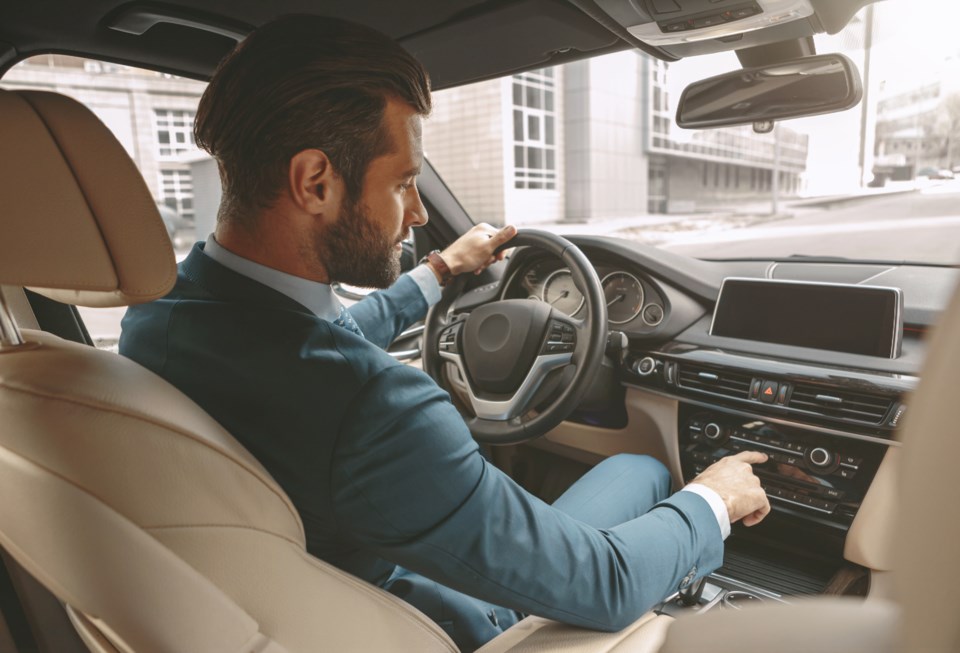Imagine you’re driving down Highway 17 and suddenly a car swerves in front of you and smashes head-on into your vehicle.
You’re seriously injured, there are no other witnesses around and the other driver is telling a much different version of how the collision happened. You may not be aware that underneath the front seat or center console, there is an electronic witness that can offer investigators an accurate picture of what happened.
Your car’s black box as expert witness
Most people likely aren’t aware they have an Event Data Recorder, popularly known as a “black box” in their car. Just like an airplane’s black box when a crash happens it can offer a wealth of valuable data.
James Ross, personal injury lawyer at Orendorff and Associates in Sudbury said, “It’s really exciting what technology can do. Five seconds before the collision, the EDR data will tell you how fast you were going, if you were accelerating or braking, if you were wearing a seatbelt, if cruise control was engaged, if the radio was on, and a dozen other variables.
In more advanced systems, the EDR information can be used by a collision reconstructionist to determine the perception reaction time, to backtrack, when and if, the person who hit you took corrective action to avoid the collision and when you first detected the need to take evasive action to avoid the collision.
The black box will tell the truth
Human witnesses are fallible. Chances are they have no idea how fast they were going or the distance from the other vehicle prior to the collision. Ross said, “With the EDR you know what speed the vehicle was travelling, when the driver applied the brakes, and you can determine when they perceived the problem.”
Memories fade and recall can be distorted by witnesses who are biased. Ross said, “The advantage of the Event Data Recorder is that it doesn’t have any skin in the game. A jury is more likely to accept EDR data than the testimony of a witness.”
The data can be used along with the evidence of a collision reconstruction expert to give a jury an accurate simulation of how the collision occurred. For example, a collision expert can testify that a driver braked just two seconds before the collision, but prior to that they were accelerating above the posted speed limit.
Ross said, “The potential for the EDR is limitless because as systems become more advanced, it will record more data. It will be able to create a much clearer picture of how the crash happened. If the EDR evidence indicates that the plaintiff was going the speed limit, the jury is not going to think that the plaintiff should have been doing something differently.” It’s up to the jury to decide who is more reliable, the EDR data or the memory of the defendant.
Getting access to the data isn’t easy
The police will get a warrant for the EDR data if they’re investigating a fatal or serious injury accident. Investigators will retrieve the data if they plan to lay criminal charges.
In a civil case, a personal injury lawyer can hire a forensic engineering firm to retrieve the black box and access the data because they have the computer software to do that. Don’t try to pull out the EDR device and retrieve the information yourself, because the data can be corrupted.
The information is erased after the ignition is cycled more than 200 times. Ross said, “By the time the clients retain us, the data isn’t available. It’s unfortunate because if you don’t get the information, you lose a lot of valuable evidence.”
The owner of the vehicle can ask their insurance company to give their lawyers access to the data and they will return it, but you need to act fast. It’s important, especially if you know that liability is in dispute. You want to gather as much information as you can.
EDR data can be the voice of clarity and reason in a personal injury case, especially where loss of memory or a death has occurred. You can also review the data to help you remember how the collision happened.
The black box can be the most important piece of evidence to support your claim and one that the jury is most likely to believe.
If you’ve been injured in a collision and you’re wondering if you should start an action, call James Ross at (705) 673-1200, Email: [email protected] or visit them online here.
